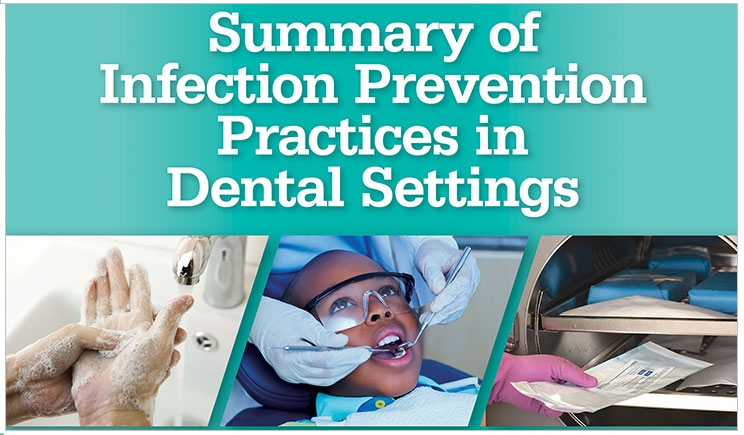
The Centers for Disease Control and Prevention (CDC) has released its Summary of Infection Prevention Practices in Dental Settings: Basic Expectations for Safe Care. It introduces new elements to the standard precautions introduced in the CDC’s 2003 guidelines and provides a downloadable checklist in a user-friendly format.
“This summary and checklist is not a replacement for the 2003 guidelines,” said Jennifer Cleveland, DDS, lead for infectious diseases and infection prevention in dental healthcare settings at the CDC. “Rather, it’s kind of a repackaging of the most important elements presented in that document.”
The summary addresses infection prevention program administrative measures, infection prevention education and training, respiratory hygiene and cough etiquette, updated safe injection practices, and administrative measures for instrument processing. While drawing upon the 2003 guidelines, it also includes guidelines published by other CDC divisions since 2003.
“The CDC has been involved in continually updating the scientific evidence and keeping abreast of any transmissions of breaches in infection control that we are called to investigate,” said Cleveland. “We’ve also reviewed the literature and have found that several transmissions that have occurred since 2003 involved breaches in infection control.”
The CDC does not believe that the 2003 dental infection prevention recommendations need to be modified, but it has found inconsistent compliance with these recommended practices. There is a need, the CDC says, for comprehensive training to improve the understanding of the underlying principles and practices of infection control.
“Infection prevention recommendations should be available and easily understood by the entire staff so that they can be implemented by all types of dental healthcare personnel,” Cleveland said. “This is why we developed this summary of infection prevention for dental healthcare settings.”
For example, the new summary emphasizes the need for an infection prevention coordinator in each dental practice to develop written infection policies based on evidence-based guidance, regulations, and standards. This individual also would ensure that the practice has the equipment and supplies required to adhere to standard precaution practices and routinely communicate with all staff members about infection prevention issues.
“This person should be willing to be trained in infection prevention practices and should be willing to take on the responsibility of coordinating all the infection control for the office, including standard operating procedures, record keeping, and other functions related to infection control, as well as keeping up with the latest new technology in infection control,” Cleveland said.
Also, the summary includes a checklist that practices can use to evaluate administrative policies and compliance with recommendations through the observation of clinical practices. It is available as part of the overall document and as separate, print-friendly, and fillable PDFs so it can be used easily in exposure control plans and in training.
“The elements for the checklist for each topic area can be placed throughout the office as a reminder of standard operating procedures,” Cleveland said. “This resource also can be used for investigations of dental settings where transmissions or breaches of compliance have occurred.”
Additionally, the Organization for Safety, Asepsis and Prevention (OSAP) provides an overview of the relevant recommendations since 2003 on its website, highlighting some of the changes that have occurred since the 2003 guidelines were introduced. And in addition to live lectures on the summary scheduled for major dental meetings, OSAP has created an array of supplemental tools designed to help dental teams comply with the CDC guidelines. These tools include:
- From Policy to Practice: OSAP’s Interactive Guide to the CDC Guidelines: This free online course comprises 7 modules that break the guidelines down into easily understood principles.
- CDC Guidelines: From Policy to Practice by OSAP: This self-study workbook walks users through the CDC guidelines. Each chapter offers practical how-to instructions, charts and checklists, pictures and captions, answers to common questions, and guidance for making sound clinical judgments.
- OSHA and CDC Guidelines: Interact Training System: This program combines requirements for Occupational Safety and Health Administration (OSHA) annual training with the CDC guidelines.
- OSAP Dental Infection Control Educators’ and Trainers’ Toolkit: Delivered via CD, this coaching workbook is designed to assist with the development, planning, and promotion of successful, high-impact infection control and safety programs and presentations.
OSAP also will use social media, its member publications, Web forums, conference programming, and national meetings to keep the dental profession informed about the guidelines. It will work with consultant, educator, and corporate members while coordinating with other dental organizations to help educate the dental community as well.
Related Articles
How Do You Treat a Patient with HIV? The Same as Everyone Else
Infection Control Boot Camp Sets Records
Dentures May House Respiratory Pathogens











